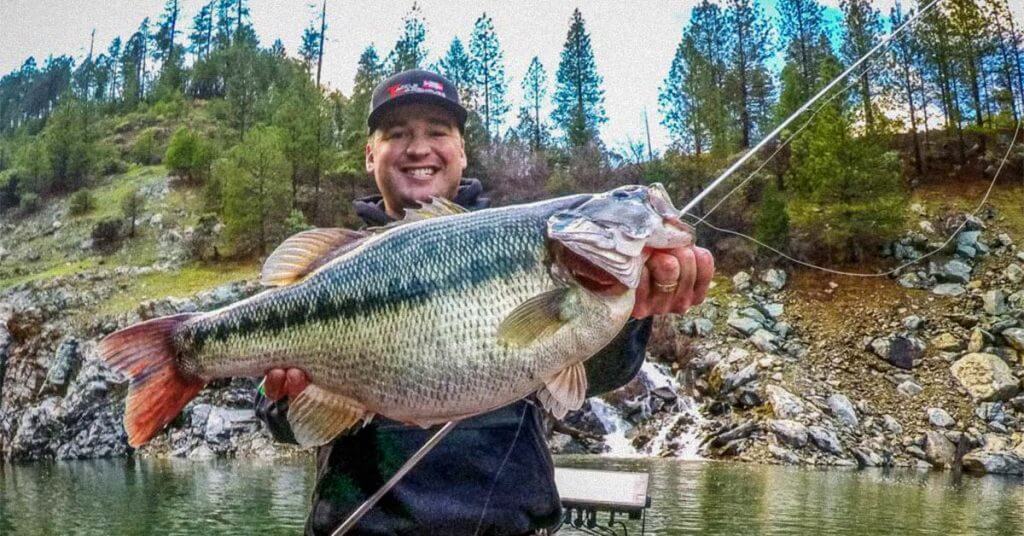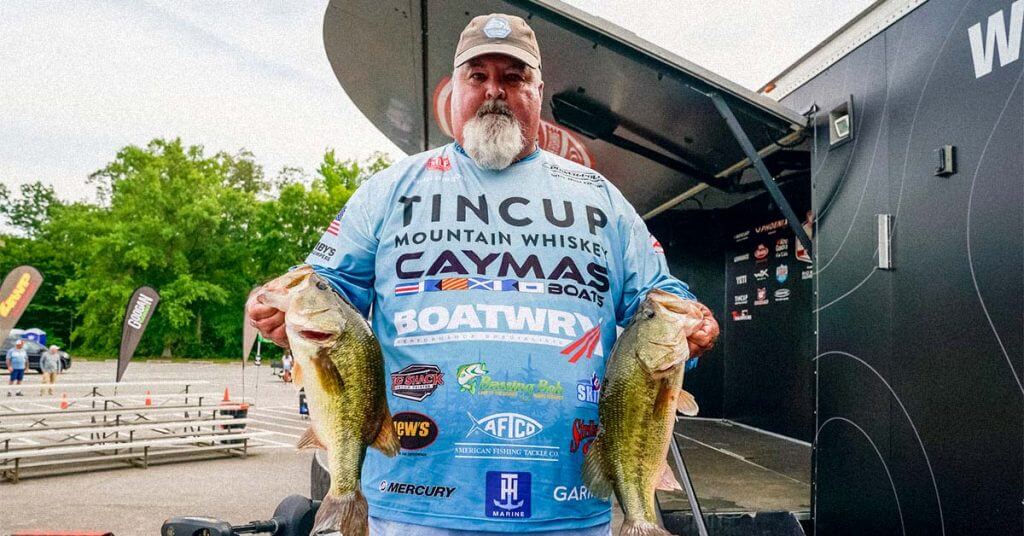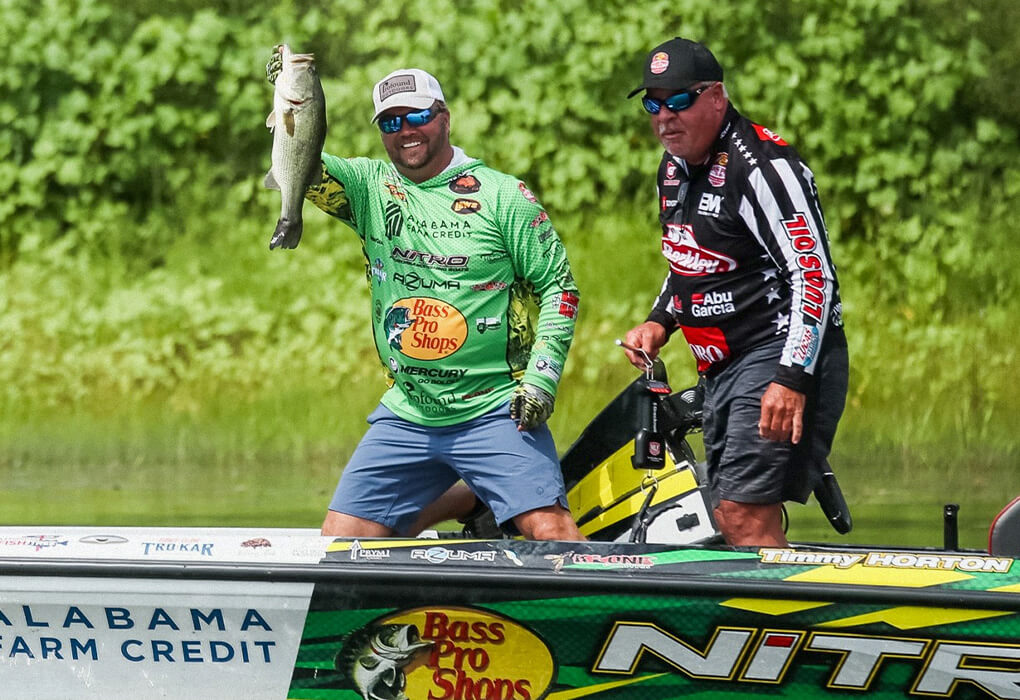
Timmy Horton uses crankbaits to reel in bass, whether it’s in tournaments or on his popular television show, “Timmy Horton Outdoors” (photo by Josh Gassmann/Major League Fishing)
So, do you want to know why Timmy Horton is so enamored by crankbaits?
Drift back to a fall day on Falcon Lake in Texas. Horton had a video crew for his “Timmy Horton Outdoors” television show with him, and he was looking to put a few big fish in the boat.
As it turns out, that camera crew provided proof of just how effective deep-diving crankbaits can be.
Using the Azuma Z Boss crankbait he designed, Horton caught and released a 12-pound bass that day. But that wasn’t all. He continued to catch big bass, and ended the day with his five biggest bass weighing 45 pounds.
“That’s one of the best days on the water I’ve ever had,” said Horton, a longtime tournament fisherman who recently retired to devote more time to his television show and the lodge he and his wife run.
“It was just incredible. The water temperature was in the 70s, and the bass were really aggressive. I think that big-profile crankbait I was using triggered them to bite.”
That wasn’t the first or last time Horton has caught big bass on crankbaits. Early in his career, he became inspired by pros such as David Fritts and Mark Davis, who were crankbait legends, and he set out to develop his own style of fishing with the popular baits.
The results speak for themselves. Horton recently retired after a 25-year pro career in which he had six wins and 43 top 10 finishes in national tournaments.
But he is far from done in the fishing game. He now has more time to spend on his television show, designing lures for Azuma Baits and running his Willow Oak Lodge in Alabama.
He remains in demand on the seminar circuit, often speaking about his trademark crankbaits and how to fish them.
So, get out your tacklebox and pick out a few of your favorites. It’s time to go fishing!
Table of Contents

A familiar sight on the pro tour: Timmy Horton winding up for a long cast with a crankbait (photo by Garrick Dixon/Major League Fishing)
Why a Crankbait?
Horton learned long ago that a deep-diving crankbait can lure big bass.
Brought up in Alabama, he was surrounded by waters that were teeming with largemouths. And one of the best ways to catch them was by throwing a crankbait.
“When I was just getting started, my buddies and I won local tournaments by throwing crankbaits,” said Horton, who lives in Muscle Shoals, Ala. “Everyone else was drowning plastics, but we went out offshore and fished crankbaits along ledges.
“That’s what really lit a fire in me. The crankbait became my confidence lure.”
A big part of a crankbait’s effectiveness is that it allows anglers to cover a lot of water, Horton said.
“When you stay on the move, you have a better chance of finding those aggressive bass that are schooled up,” he said. “Once you locate them, you can stay in one place and catch a limit of fish”
Crankbaits also are good at producing big strikes, Horton said.
“They produce a big profile and that triggers large bass into biting,” Horton said. “If you can deflect it off the bottom or some type of structure, you can imitate that erratic behavior of a big shad, and that often will get those reaction strikes.”
The best scenarios involve current, either in a reservoir or a river.
“When there is current, the bass are usually going to be close to the bottom, and that’s ideal for crankbait fishing,” Horton said. “I want my crankbait bumping the bottom, so it’s moving erratically.
“When there isn’t much current, the bass will usually be suspended and there are better baits for catching them, like swimbaits that you can keep at the depth the bass are using.”
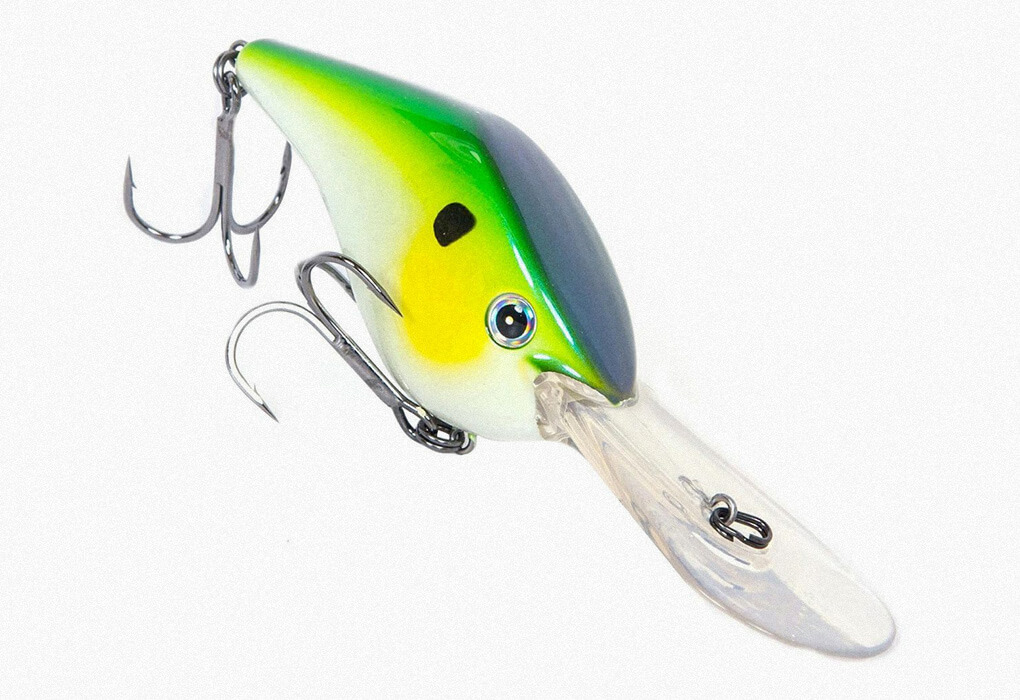
The Azuma Baits Z Boss Widow Maker
A Crankbait for All Depths
This is the era of specialization in fishing.
Nowhere is that more apparent than in the crankbait business. When I was a kid, crankbaits came in limited dive models. Most of them were medium divers, but there were a few models for shallow fishing and even fewer for deep cranking.
Now, companies such as Azuma offer a series of baits, each designed for a specific layer of water. Squarebills are designed to be fished around shallow cover, but Horton has designed seven other models to cover depths from 6 to 8 feet of water all the way to more than 25 feet.
That covers most situations where crankbaits are effective.
“I use crankbaits 9 or 10 months out of the year,” Horton said. “The only time they’re not effective is the dead of winter and during the spawn.”
Horton will follow the bass in during the spring, starting with main-lake points and moving on to staging areas once the water warms.
After the spawn, he will again fish points to start with. As the water warms, he will target ledges in 15 to 20 feet of water.
“A lot of it is driven by where the shad are,” Horton said. “That’s the key.”
Another requirement is making long casts, he said.
“Especially when you’re trying to get your crankbait deep, you want to make a long cast to give it a chance to dive,” he said.
He has designed crankbaits for Azuma since 2012. He is proud of the Z Boss series he developed, promoting the baits’ unique qualities.
He looked for ways to make his crankbaits hydrodynamic, much the same way as a sports car is aerodynamic. He believes he accomplished that goal with the Z Boss baits.
“I wanted a design that would cut through the water more softly instead of that hard thumping action that most crankbaits have,” he said. “We’re happy with what we came up with.
“I have caught a lot of big bass on those Z Boss baits, and other people have, too.”
Equipment
Talking about specializing, Horton even designed what he deems “the perfect crankbait rod” for Azuma.
He developed a 7-foot, 3-inch medium-heavy baitcasting rod called the Guntersville after the famous Alabama bass lake. That rod allows for long casts, power and sensitivity.
He uses a standard baitcasting reel with a 6:4:1 gear ratio and 12-pound test fluorocarbon line.
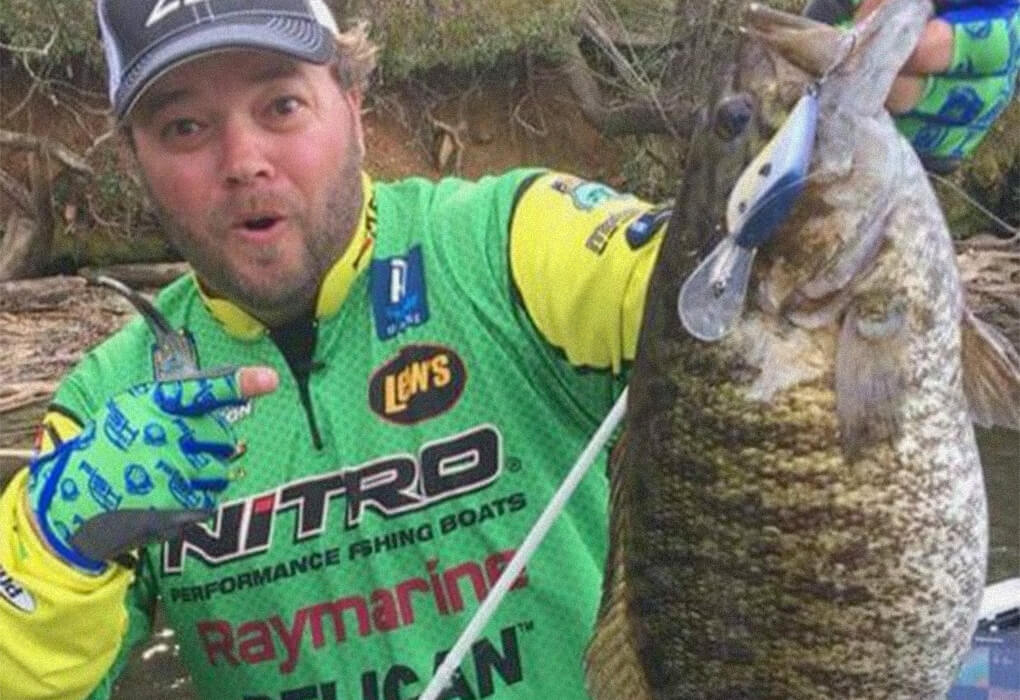
Fall is one of Timmy Horton’s favorite times of the year to cast crankbaits for big bass (photo courtesy of Timmy Horton)
Fall: A Time for Crankbaits
As summer’s heat fades, Horton gets excited about what lies ahead.
He knows that late September through November can offer some of the best crankbait fishing of the year.
“Fall is the one time bass can be found throughout the water column,” Horton said. “Some will still be out in that 15- to 20-foot range, but a lot of bass will be in the backs of coves or creeks, chasing shad.”
Much of their location is tied to the baitfish. As the water cools, the shad move shallow. When the schools of baitfish wander into pockets and corners, hungry bass will pin them there and move in for the easy kill.
That’s when crankbait fishing can excel.
“It starts when the water temperature drops into the mid 70s,” Horton said. “It will continue until the (water) temperature drops into the low 50s.
“It’s just a great time to be out there.”

A crankbait imitates the bass’ most dominant forage, a shad (photo courtesy of Timmy Horton)
A Tip for Beginners
So, you’re hooked. You want to start casting crankbaits, and there are plenty of them to choose from.
But where do you start? Horton recommends idling around in your boat and studying your fish finder until you find the area with the most activity. If you’re still having trouble, head to a rocky point and start experimenting with different depths.
“The key is finding the schools of shad,” Horton said. “The bass usually aren’t far from their food.”
Last Cast
So, what have we learned from Horton’s crash course on fishing crankbaits?
First, use a bait that is capable of reaching the depths where the bass are holding. Use a long rod to make long casts and get the bait to where it is grinding along the bottom, especially near ledges.
Vary your retrieve speed to see what the bass want that particular day. And make sure the reservoir or river you are fishing has big baitfish. If it does, use high-profile baits that can trigger big strikes.
Go out on days when you have optimal opportunities. Water temperatures in the 60s and low 70s are ideal.
Then get ready to set the hook. Fish on!

